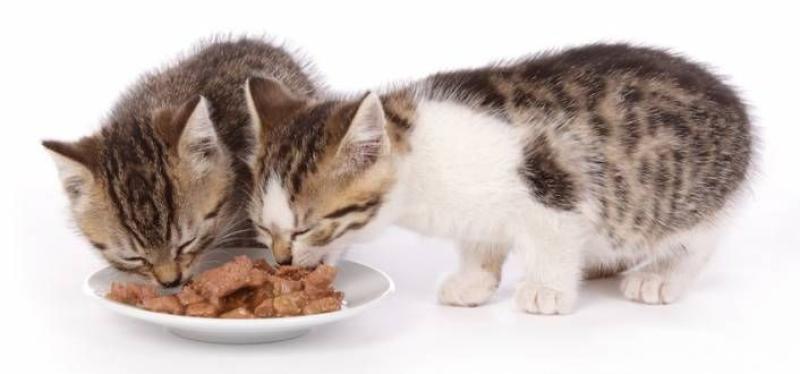The pet food industry, particularly the segment focused on cat wet food, has experienced significant growth due to evolving consumer preferences and increasing awareness about pet nutrition. Cat owners today are more informed and selective when it comes to feeding their feline companions, seeking options that not only satisfy their cats’ taste buds but also provide essential nutrients for overall health and well-being. Wet cat food, with its superior hydration benefits and palatable texture, continues to hold a prominent place in the diets of many cats around the world. This article delves into the key aspects of cat wet food, exploring nutritional values, product innovation, and emerging market trends to provide a comprehensive overview.
Nutritional Composition and Health Advantages of Cat Wet Food
One of the fundamental reasons cat owners opt for Cat Wet Food is its higher moisture content compared to dry kibble. Cats naturally have a low thirst drive and tend to consume less water, which can predispose them to urinary tract infections and kidney issues. Wet cat food typically contains between 70% to 85% water, aiding in hydration and supporting urinary tract health. Furthermore, wet food often boasts a richer protein profile derived from real meat, fish, or poultry, crucial for carnivorous cats who require amino acids like taurine for heart and eye health.
In addition to hydration and protein benefits, wet cat food usually has fewer carbohydrates than dry food, matching more closely the natural diet cats would consume in the wild. This lower carbohydrate content is beneficial for weight management and preventing diabetes in felines. Many formulations now include added vitamins, minerals, and antioxidants to enhance immune function and support healthy skin and coat condition. Premium wet cat food options pay close attention to ingredient quality, often avoiding fillers such as corn, soy, or artificial preservatives, aligning with the growing demand for clean-label pet food.
Innovations and Product Variety Driving Cat Wet Food Market Expansion
The cat wet food market showcases a dynamic variety of products designed to cater to diverse feline preferences and health requirements. Manufacturers have introduced grain-free, organic, and limited-ingredient formulas addressing common allergies and sensitivities reported among cats. Freeze-dried and raw-inspired wet food offerings are gaining traction as pet owners seek less processed, nutrient-dense alternatives.
Texture and flavor innovations also play an essential role in product development. From pâtés and chunks in gravy to minced or shredded varieties, wet cat foods now provide multiple flavor profiles including chicken, salmon, turkey, and more exotic proteins like duck or rabbit. This broad spectrum of choices helps combat finicky eating habits and ensures adequate nutrient intake. Additionally, there is a rising trend towards functional wet foods targeting specific health concerns such as digestive health, weight control, and joint support, often incorporating supplements like probiotics, omega fatty acids, or glucosamine.
Market Insights into Cat Wet Food Consumer Behavior and Purchase Channels
Understanding consumer behavior is critical for stakeholders operating within the cat wet food domain. Pet owners tend to prioritize product quality, ingredient transparency, and brand reputation over pricing alone. Online purchasing platforms have transformed how consumers acquire pet food, with subscription services and auto-replenishment becoming popular for convenience and ensuring consistent supply.
Research on cat wet food purchasing patterns shows a strong correlation between pet owners’ increasing humanization of pets and willingness to invest in premium wet food products. The rise of social media and influencer endorsements further shapes demand by educating consumers about nutrition and introducing novel products. Pet specialty stores remain important for in-person shopping experiences, offering expert advice and the ability to examine product packaging closely.
Navigating Comprehensive Market Research Reports on Cat Wet Food Trends and Forecasts
For businesses and investors aiming to deepen their understanding of global cat wet food trends, exploring detailed market research reports provides valuable insights. These reports analyze various dimensions including competitive landscape, consumer demographics, product segmentation, and regional demand variations. They also highlight technological advancements in food formulation and packaging innovations that contribute to shelf life enhancement and product freshness.
Accessing analytical resources that track emerging markets, forecast growth trajectories, and map regulatory impacts can guide strategic decision-making for manufacturers and distributors. By studying market intelligence on cat wet food, stakeholders can identify lucrative opportunities, potential challenges, and invest in product development aligned with consumer expectations.
Evolving Packaging and Sustainability Practices in Cat Wet Food Industry
Packaging plays a pivotal role in both product preservation and environmental responsibility within the pet food sector. Wet cat food packaging has evolved from traditional cans to pouches and trays that offer improved convenience, portion control, and ease of use. This transition also addresses the needs of busy pet parents who prefer resealable and lightweight options.
Sustainability remains a growing concern, prompting manufacturers to explore recyclable, biodegradable, or compostable materials for wet food packaging. Moreover, many companies are incorporating sustainable sourcing for raw materials to reduce the environmental footprint. Eco-conscious consumers increasingly favor brands that demonstrate commitment to green practices, influencing market competitiveness and brand loyalty.
Cat wet food represents a crucial segment of the pet nutrition landscape, offering essential health benefits, product diversity, and adapting to shifting consumer demands and sustainability goals. Detailed market research and continuous innovation remain key drivers in understanding and capitalizing on the growth potential within this dynamic industry.
Get this Report in Japanese Language: 猫用ウェットフード
Get this Report in Korean Language: 고양이 습식 사료
Read More Articles Related to this Industry
Recent Development in Bay Leaves Industry
About Author:
Money Singh is a seasoned content writer with over four years of experience in the market research sector. Her expertise spans various industries, including food and beverages, biotechnology, chemical and materials, defense and aerospace, consumer goods, etc. (https://www.linkedin.com/in/money-singh-590844163)
